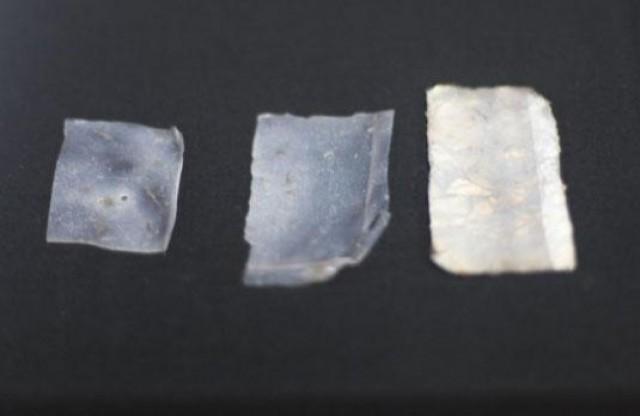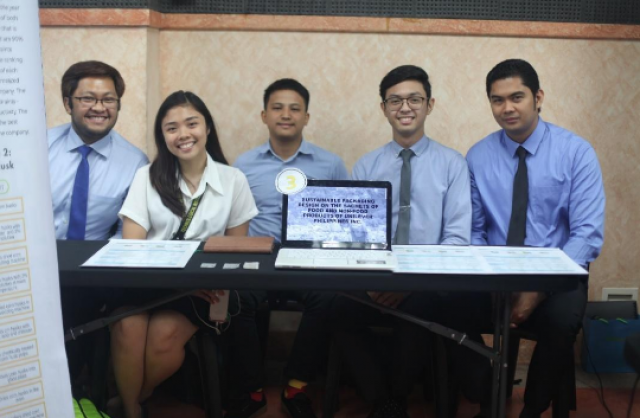Could packaging made of corn husk and chicken feather be the solution to plastic sachets?
It’s no joke: We are drowning in plastic. United Nations figures show 8 million tons of plastic — bottles, packaging and other waste — enter the ocean each year, endangering global ecosystems, killing marine life, and entering the human food chain.
Single-use plastic has been pointed out as a main driver of this problem, and sachet economies like the Philippines — which has been named the third worst polluter into the world's oceans — have started to proactively look for solutions.
RELATED: 7 things I learned after I joined a coastal cleanup
Enter this group of five graduating students from the Technological Institute of the Philippines (T.I.P.), who cleverly used corn husk and chicken feather to come up with a compostable plastic alternative.
Their corn husk-chicken feather solution is actually the winning entry to the competition for which T.I.P. and Unilever Philippines partnered up.

With support from the Intellectual Property Office of the Philippines (IPOPHIL), the two institutions tasked 75 graduating Industrial Engineering students to split into groups of five and participate in a packaging competition, which served as their thesis requirement.
According to Ed Sunico, Unilever Philippines Vice President for Sustainable Business and Communications, the main criteria for judging included clarity and credibility of the design focus, purpose and solution relative to the posed challenge, and packaging innovation within the design.
“Aside from sustainability, it’s important that the packaging will be able to ensure the right quality of our products,” said Sunico.
Unilever looked at the project as a “research initiative [that] identified a number of sustainable materials that can be considered for sachets or mini-dose packs. These ideas need to progress to feasibility assessment,” Sunico continued.
All 75 competing students spent their first semester doing research for their design proposal. It was only after presenting their proposals and getting approval did the students create a prototype, which was “the most difficult part [of the exercise],” said Danielle Samantha Gundayao, a member of the winning team.

She, along with Rellie Samson, John Paulo Rosuelo, Neilson Pancho, and team leader Kris Allen Cruz, shared their idea with the chemical engineering department, but they had to manually produce the sample themselves.
After the competition, T.I.P. submitted the lead ideas for a DOST grant for “further research. We would like to see more sustainable sachets in the market soon but we also need to do diligent and proper research and development,” added Sunico.
Here's hoping the R&D finishes soon and a sustainable solution be put in place, before plastic waste finishes us. — LA, GMA News




